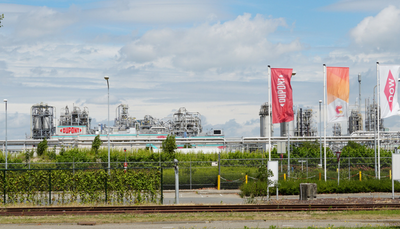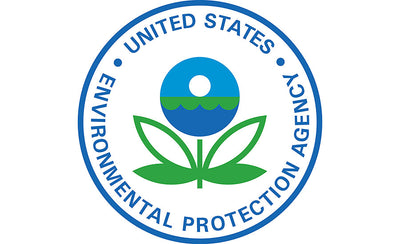Water Quality InformationWritten By Actual Experts
RSSPFAS Contamination in 8 Communities From Nearby Incinerators

How DuPont and Chemours Changed Drinking Water Forever

Analies Dyjak, M.A. | Head of Policy
North Carolina has been at the heart of a drinking water crisis. At least 1 million North Carolinians have been exposed to unsafe levels of an unregulated contaminant called Per and Polyfluoroalkyl Substances, PFAS, or "forever chemicals." The source of the contamination traces back to a fluorochemical operation in Fayetteville - causing widespread contamination in municipal drinking water and in private wells. This article will discuss two companies’ legal tactics to try and avoid liability, and how the victims of this tragedy continue to be left in the dark.
Polluter v. Polluter
You may already be familiar with the two companies at the root of this crisis in North Carolina. In short, DuPont had been manufacturing and distributing a category of chemicals called Per and Polyfluoroalkyl Substances or PFAS, since the 1980's. DuPont created Chemours - a spinoff company in charge of overseeing all fluoro-chemical operations, including the entire category of PFAS chemicals. In doing so, Chemours assumed direct liability for DuPont’s decades of chemical contamination - including all environmental and public health damages. According to the 2019 lawsuit, Chemours claimed that DuPont was not entirely forthcoming about the amount of damages the spinoff company was to incur. Chemours claimed that they were set up by DuPont to be “financially overwhelmed,” and ultimately bankrupt. When Chemours took over DuPont in 2015, they agreed to historical liabilities of no greater than $1.42 billion. Chemours claimed that DuPont wildly underestimated the totality of the liabilities. For example, the cost of one particular class action lawsuit, including 3,500 cancer and bodily harm claims associated with exposure to PFOA, was grossly underestimated. DuPont claimed that settlement would cost no greater than $128 Million, while Chemours ended up owing $671 Million for that case alone.
Chemours v. DuPont was ultimately dismissed by a Delaware judge in 2019. This was bad news for Chemours, and even worse news for the tens of thousands of individuals impacted by PFAS contamination. Both companies have been trying to delay and reorganize, in order to pay the absolute least amount of money to the state of North Carolina as possible. If you want to learn more about other Chemours’ litigation in North Carolina, click here. We also have an article about an unrelated case against DuPont, which you can find here.
North Carolina Attorney General Sues DuPont and Chemours
Soon after Chemours sued DuPont, the state of North Carolina turned around and sued both companies. On October 13, 2020, North Carolina Attorney General Josh Stein, sued DuPont and Chemours for PFAS contamination in the Cape Fear River. The single Chemours plant in Fayetteville has caused widespread PFAS contamination throughout several major North Carolina counties, including New Hanover, Bladen, Pender, and Brunswick. The recent lawsuit is calling for both Chemours and DuPont to pay for all “past and future costs, necessary to investigate, assess, remediate, restore, and remedy” all damages. We'll have updated information on our blog and social media (@hydroviv_h2o) as this story unfolds.How Has PFAS Impacted The State of North Carolina?
There's no way to fully estimate how this negligence has impacted North Carolinians. What we do know is that exposure to PFAS chemicals has been associated with a variety of negative health effects, including: an increased risk of cancer, decreased immune function, increased cholesterol, and more. In a study completed just this year, a team of Yale researchers found that exposure to PFAS increases the risk of miscarriage by 80-120%. A PFAS variety that's especially problematic in the Cape Fear River, called GenX, was deemed a "probable carcinogen" by EPA in 2018. On April 10, 2024, the US EPA has announced drinking water standards to limit exposure to 6 types of PFAS chemicals, including GenX. PFAS have been detected at levels well above public health recommendations in Wilmington, Leland, Winnabow, and other cities that draw water from the Cape Fear River and its tributaries.
What Can I Do?
Media coverage has been propelled by community organizers throughout impacted areas in North Carolina. Organizations like North Carolina Stop GenX in our Water, Cape Fear River Watch, Clean Cape Fear, and many others have “blown the whistle” on what’s going on in North Carolina. We recommend following these organizations, as well as our social media channels (@hydroviv_h2o) to stay up to date. It's important to point out that North Carolina is not the only state that has PFAS in its drinking water. Michigan, Minnesota, New York, New Hampshire, and California are just some of the states where PFAS have become a serious threat. The Environmental Working Group created a map which shows areas of the country with detectable levels of PFAS in drinking water. You can check out the map here.
If you are planning on purchasing a water filter, make sure that it’s rated to remove PFAS chemicals. Most pitcher, faucet, and countertop systems are unable to remove PFAS. Check out this PFAS filtration removal study completed by Duke and NC State.
Other Articles We Think You Might Enjoy:PFAS Detected in Several Popular Bottled Water Brands
5 Things You Need To Know About Drinking Water Right Now
How Did Hydroviv Filters Perform in a Duke University Filter Study?
North Carolina's Drinking Water Crisis

Military Bases Have High Concentrations of PFAS Chemicals

***Updated 8/29/18 to include video***
Analies Dyjak | Policy Nerd
Per and Polyfluoroalkyl Substances (PFAS) have been receiving a ton of media attention throughout this past year. PFAS are a category of toxic contaminants that have invaded public and private drinking water systems across the entire country. Military bases are extremely susceptible to this type of contamination because of necessary on-base activities. If you would like to learn more about what PFAS are, their health effects, and if they're regulated, please click here.
Why Do Military Bases Have High Concentrations of Per and Polyfluoroalkyl Substances (PFAS)?
Military bases have historically had issues with pollution, due to the nature of on-base activities. Municipal fire departments also travel to nearby military bases because they provide an open, secure area to train. So not only are military personnel being directly exposed to PFAS chemicals in water, but so are local fire departments. The Department of Defence isn’t necessarily to blame for the high rates of contamination of PFAS on military bases. The Manufacturers of PFAS-containing fire fighting foam who actively sell to the DOD are greatly at fault. Because there is no effective alternative on the market, the military has no choice but to continue purchasing and using these products. Unlike many other countries, the United States doesn’t use the precautionary principle in chemical manufacturing. This means that chemicals are introduced to the market before toxicological due diligence is completed. Most of the time it takes someone getting extremely sick for manufacturers to even begin to pay attention.
More often than not, military bases have their own underground private wells that provide drinking water to families living on base, rather than being apart of a public drinking water system. Fire fighting foam can either directly percolate into soil, or run off into surrounding surface water sources. Water from contaminated soil naturally recharges on-base drinking water wells, which families consume on a daily basis.
What Is The Department of Defense Doing About Per and Polyfluoroalkyl Substances (PFAS) on Military Bases?
The most recent data provided by the DOD stated that 99% people receiving non-DOD-treated water were served by systems with no violations, whereas only 89% of people receiving DOD-treated water were served by systems with no violations. It’s important to note that these data are from bases that voluntarily tested for PFAS chemicals in water, but they do however reiterate that military bases have higher concentrations of this contaminant than other areas in the country. In October of 2017, the US Government Accountability Office reported that the Department of Defense has taken action on PFAS. DOD has directly shut down wells or provided filtration to 11 military installations. This is definitely a step in the right direction, but there are over 400 military bases in the United States that are still contaminated. Approximately 3 million people in the US drink water provided by the DOD. Not only are active military personnel at risk, husbands, wives and children are being adversely impacted by PFAS chemicals in water. Again, manufacturers of these dangerous chemicals are mostly to blame for such high concentrations of PFAS contamination on military bases.
What Are Public Officials Doing About Per and Polyfluoroalkyl Substances (PFAS)?
EPA set a Lifetime Health Advisory Level of 70 parts per trillion for both PFOA and PFOS. The rule of thumb for PFAS is that the sum of the category of contaminants should be no higher than 70 parts per trillion. ATSDR believes this level should be reduced to 20 parts per trillion for drinking water. Again, Lifetime Health Advisory Levels and Minimum Risk Levels are non-enforceable limits that municipalities are not required to follow. DOD has not developed their own standard for PFAS in drinking water and therefore follow the non-enforceable national level of 70 parts per trillion. DOD is not at all incentivized to create a standard or even test for PFAS, because of the outrageous mitigation expenses.
Other Articles We Think You Might Enjoy:PFAS: What You Need To Know
Recap of EPA's 2018 PFAS National Leadership Summit
PFAS: Toxicological Profile
Problems We Found With Chattanooga's Drinking Water
Analies Dyjak | Policy Nerd
For Hydroviv’s assessment of Chattanooga, Tennessee’s drinking water quality, we collected water quality test data from the city’s Consumer Confidence Report and the U.S. Environmental Protection Agency. We cross referenced Chattanooga’s water quality data with toxicity studies in scientific and medical literature. The water filters that we sell at Hydroviv are optimized to filter out contaminants that are found in Chattanooga’s drinking water.
Where Does Chattanooga Source Its Drinking Water?
Chattanooga sources its drinking water primarily from the Tennessee River. Water is treated at the Tennessee American Water Citico Water Treatment Plant before being distributed to the 177,000 residents of Chattanooga.
Disinfection Byproducts In Chattanooga’s Drinking Water
In recent years, Chattanooga has had a major problem with disinfection byproducts or DBPs. DBPs form when the chlorine-based disinfectants that are routinely added the water supply, react with organic matter. DBPs are split into two categories; Haloacetic Acids-5 (HAA5) and Total Trihalomethanes (TTHMs). Concentrations of TTHMs averaged 70 parts per billion, but were detected as high as 89.1 parts per billion in Chattanooga water. HAA5 concentrations averaged 41.8 parts per billion and reached levels as high as 51.4 parts per billion. For a bit of perspective, the EPA set a Maximum Contaminant Level of 60 parts per billion for HAA5 and 80 parts per billion for TTHMs. While Chattanooga's water quality is technically still in compliance, these levels are definitely high. Disinfection Byproducts are a category of emerging contaminants which means they have been detected in drinking water but the risk to human health is unknown. Regulatory agencies have very little knowledge about the adverse health effects of DBPs, and their toxicity.
Lead In Chattanooga’s Drinking Water
Lead enters tap water through old lead service pipes and lead-containing plumbing. 10% of sites that were tested for lead had concentrations over 2 parts per billion. Environmental Protection Agency, Center for Disease Control, and American Academy of Pediatrics all recognize that there is no safe level of lead for children. However, this years lead levels in Chattanooga are relatively low compared to other major municipalities in the US.
It’s important to note that only a handful of contaminants are required to be included in annual Consumer Confidence Reports, and that there are hundreds of potentially harmful unregulated contaminants that aren’t accounted for. If you’re interested in learning more about water filters that have been optimized for Chattanooga’s tap water quality, feel free to visit www.hydroviv.com to talk to a Water Nerd on our live chat feature or send us an email at hello@hydroviv.com.
Other Articles We Think You Might Enjoy:Lead Contamination In Drinking Water
Disinfection Byproducts In Drinking Water: What You Need To Know





